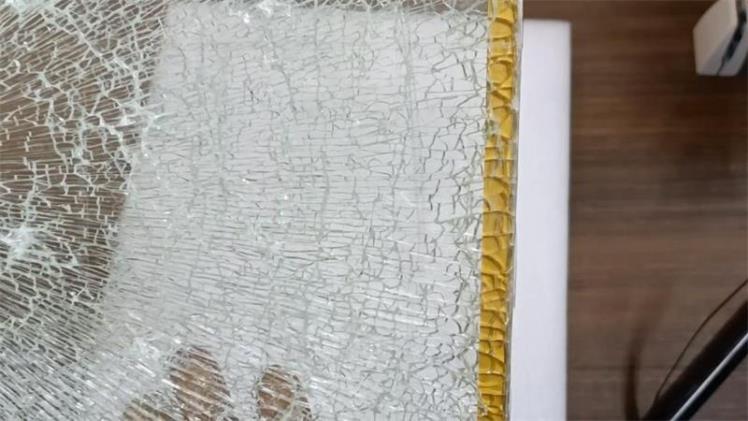6.3MM Tempered Vacuum Insulating Glazing

If you are considering having a tempered vacuum insulating glazing installed in your home, there are several factors you should consider. These include your personal preferences, your location, and your budget. Also, you should be aware of what types of glass you will need.
BENGglas
One of the many cool things about a new home is that you can build it yourself. It is a very convenient time and money event that allows you to focus on your hobbies and interests without the distractions of the everyday world. The best part is that you get to choose which projects you want to tackle first. With that said, this article will discuss a few of the best and most efficient products of their kind. Whether you are looking to build a new house, or renovate the old one, there’s a product out there for you. Choosing the right material is the first step to making your next home the best one that it can be.
Cerasolzer 217
It is not uncommon for vacuum glazing to be manufactured with the aid of ultrasonic soldering. This technology is capable of forming strong bonds between the substrate and the Cerasolzer 217, the sealing material of choice.
The process of forming a vacuum glazing is a multifaceted affair that involves several key considerations. Aside from proper design and construction, adequate vacuum pressure is also needed. For this reason, a vacuum pump and appropriate support structure should be implemented. In addition, a proper design of the enclosure cover and support structure can go a long way toward ensuring a safe and efficient fabrication process.
One of the most important components of a vacuum glazing is the edge seal. An ideal edge seal must be robust enough to withstand stresses caused by atmospheric pressure, temperature differentials, and wind load. Although many materials are available, one of the most effective is a tempered glass.
VGlass
Vacuum insulated glazing (VIG) is a new type of energy-efficient glass. It has a good thermal insulation performance and acoustic insulation. In addition, it can help to reduce carbon emissions. Compared to triple glazed windows, the U-value of VIG is much lower. However, there are a few problems with using this type of glass.
First of all, the thickness of the vacuum insulating glazing is very small. A vacuum space can be created in the glass to reduce its thickness to only 6.3mm.The temperature of the glass can also be reduced. This is used in historical buildings to improve their renovation. Another advantage of this type of glass is its low thermal transmittance.
Laminated Glass
If you are considering buying laminated glass for your 6.3MM Tempered vacuum insulating glazing, there are several benefits to choosing this product over other glass types. For example, you can get better insulation value and acoustic performance. You can also save money. Laminated glass is known for its superior safety and security. It has two layers of glass separated by an interlayer film, which keeps the glass together when it is broken.
Unlike tempered glass, the thickness of laminated glass has no effect on its insulation value or dB reduction. However, varying the thickness of the glass can increase the sound dampening impact. Another benefit to using laminated glass for your 6.3MM insulated vacuum insulating glazing is that it can be used in existing frames. This means that it’s easier to install than triple or double glass units.
Ultrasonic Energy To Sealing Area
Ultrasonic energy is a powerful tool for producing high quality seals. The process of heating a China vacuum glazing manufacturer sample to a target temperature and applying uniform pressure can create a vacuum tight seal. However, it is not without its limitations.
The main problem with this process is that the molten material cannot penetrate through the glass pane’s small diameter. This is not a problem with ultrasonic soldering, as the molten material is forced into the micro holes created by the ultrasonic power. A secondary seal, like that used in this study, can also be used to protect the metal from moisture.
Stress Above Support Pillars
The stress on a tempered glass pane in a vacuum enclosure has to be balanced by a fabricator. For example, if you have a curved glass pane you should expect that the stress will be a tad more than if you have a square or rectangular pane. There are a few things you can do to increase the strength of the glass. One is to increase the thickness. Another is to use ultrasonic energy to disperse the support pillars. These two techniques will improve the seal quality and keep the integrity of the glass during impact testing.
It is possible to simulate the effects of a thumping load in a simulated vacuum enclosure. To do so, you have to use a three dimensional finite element method (FEM) software package. Using the aforementioned software you can simulate the effect of a 2000 N force on the centre region of a curved pane. As you can see, the resulting simulation shows that the induced stress on the glass pane will be well below 35 MPa for annealed glass.
Final Word
So, Vacuum insulated glass is a type of insulating glass that provides superior thermal insulation and sound acoustic performance. It can be used to replace a single pane of glass or to enhance the performance of a double glazing unit.




